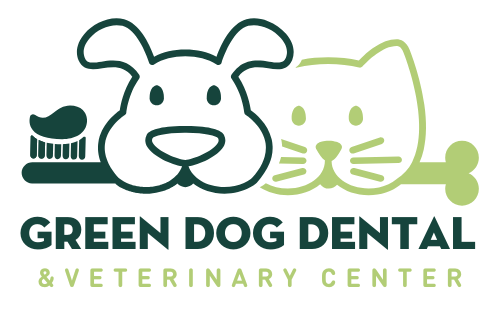
K9 Endodontics at Green Dog Veterinary Center encompasses a set of specialized dental procedures aimed at treating issues affecting the interior of the tooth, including providing root canals for pets suffering from severe dental problems. Here’s a more detailed outline of the service and a subsequent Q&A to address common concerns:
Understanding Endodontics: Endodontics is a branch of dentistry focusing on the treatment of the tooth’s interior, where the pulp (comprising nerve tissue, blood vessels, and lymphatics) resides. The main goal is to address and treat issues within this area to prevent further dental complications and alleviate discomfort.
Primary Procedures:
Root Canal Therapy: This is a tooth-saving procedure involving the removal of infected or inflamed pulp from the root canal of the tooth, disinfecting the canal, and replacing the removed tissue with dental material. It's aimed at preserving the structural integrity and functionality of the tooth while alleviating pain.
Surgical Endodontic Therapy: This is an alternative treatment aimed at removing periapical inflammatory tissue followed by apical resection and retro-filling of the root canal, conducted through a trans-osseous (through the bone) approach.
Apexification: A procedure to induce a calcified barrier in a root with an open apex or the continued apical development of an incomplete root in teeth with necrotic pulp.
Benefits of Endodontics:
- Endodontic procedures, especially root canal therapy, are less invasive and less traumatic for the patient compared to surgical extraction, making it a quicker procedure with an easier recovery.
- It allows for the preservation of the tooth, which is aesthetically pleasing to the owner and beneficial for the pet's oral function.
Post-Procedure Care:
After the procedure, it's crucial to follow the veterinarian's instructions for post-procedure care to ensure a smooth recovery and prevent any infections.
Q&A:
Is endodontic treatment painful for my dog?
No, endodontic treatment like root canal therapy alleviates pain by removing the infected and inflamed pulp, and during the sterilization process, bacteria are eliminated. The tooth returns to immediate pain-free function post-treatment.
What are the signs that my dog might need endodontic treatment?
Signs may include a broken tooth exposing the pulp, which could lead to painful conditions like pulpitis and apical periodontitis if bacteria enter the center of the tooth.
How long does the recovery process take post-procedure?
The recovery period may vary, but generally, endodontic treatments have quicker recovery times compared to surgical extractions.
Is endodontic treatment expensive?
The cost may be similar to human dentistry charges as it requires similar equipment, materials, and expertise. Some pet insurance policies may cover part of the expense.
Can any veterinarian perform endodontic procedures?
While any licensed veterinarian can theoretically perform root canal therapy, it requires advanced training, specialized equipment, materials, and expertise that most veterinarians do not have. It's recommended to consult a Green Dog veterinarian before deciding on an endodontic procedure.
